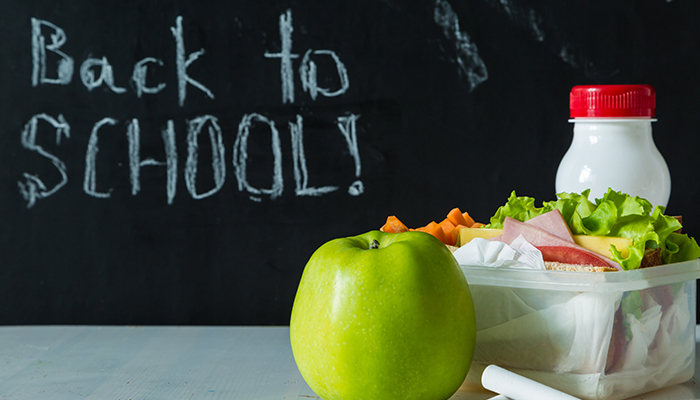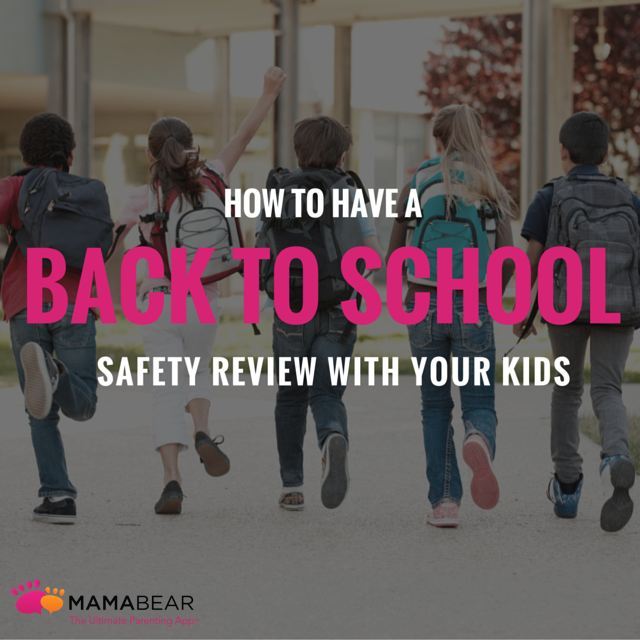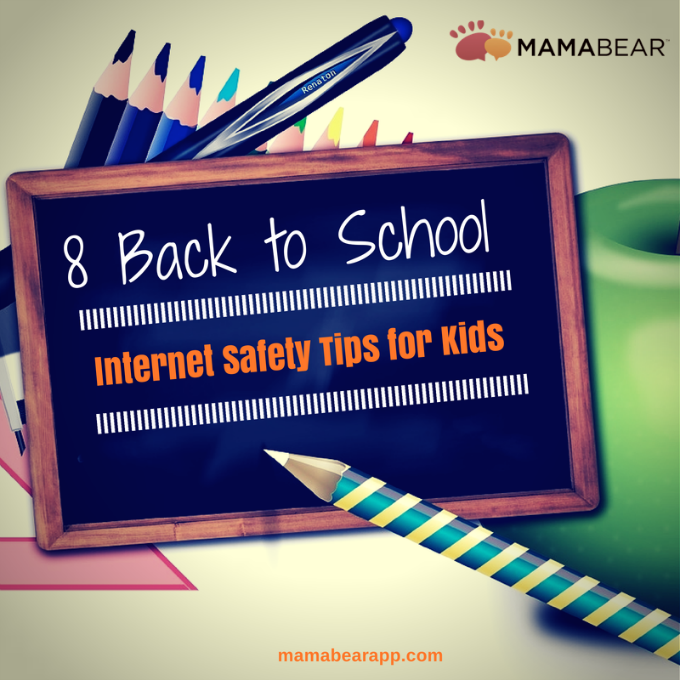Back to School season is upon us and it might just be the happiest time of year for us parents. Sadly, our kids may not share our enthusiasm! Why not brighten up your kids’ day by making them one of these fun lunches they are sure to love!
How to Have a Back to School Safety Review with Your Kids
The beginning of the school year is a time to start new and refresh the old. As you prepare by buying school supplies and looking over new class schedules, use this time to refresh another important element of your child’s life — safety rules.
Review these important back to school safety rules to help set the stage for a great and safe new school year.
Social Media Safety
Only accept friend requests from people you know. When you accept requests from strangers, you can never be sure who they really are. People create fake profiles to target teens and younger users, so always ignore requests from people you don’t know.
Never meet someone you met online in real life. If you happen to meet someone online who you don’t know, never agree to meet them personally. This is one of the most dangerous situations created through social media. If someone repeatedly asks you to meet in person, tell an adult.
If you experience bullying online, tell an adult. If you are being bullied, do not respond as that can make things worse. Also, if you see someone else being bullied, don’t get directly involved. Instead, tell a trusted adult, parent, or teacher who can help resolve the problem.
Smartphone Safety
Don’t give your password to anyone. Even if a teacher or adult asks for your password, say no. Tell them you need your parent to be there if they want to access your phone.
Always think twice before sending a text or photo. If you don’t know if you should send something (or post it online), ask yourself how you would feel if the message were posted on the front page of the newspaper. If you would feel embarrassed or ashamed with your post going public, don’t share it. You never know what can happen to your content once you send it to someone else, so only share things you feel comfortable with the world seeing.
Walking and Driving Safety
Do not look at your phone while walking near streets. When looking at your phone, you become unaware of your surroundings and are less likely to see a vehicle coming near you.
Never look at your phone while driving. Distracted driving is the number one cause of teen accidents. Put your phone in the backseat while driving and utilize the “#X It Can Wait” campaign to pause your text conversations when you get behind the wheel.
Related Post: Distracted Driving Causes More Accidents Than Ever Known
Obey the speed limit and practice safe driving. Limitations on speed are set for a reason. It is for your safety and for the safety of others on or near the road. Always adhere to speed restrictions to protect yourself and those around you.
As a parent, you are probably already using your phone to prepare for the new school. Over 75% of parents use their phone for back-to-school shopping to find coupons, compare deals, and find nearby stores.
But there is another way for parents to use their phones to prepare for the upcoming school year.
The MamaBear app, which is available for iPhones and Androids, provides parents with real-time updates when their child gets a new follower and posts a message through their social media accounts. It also uses GPS technology to send alerts when your child reaches their intended destination or goes over the speed limit while driving.
It is a Peace of Mind Parenting™ app that turns your smartphone into a tool to make the back-to-school season safer and less stressful for both parent and child.
8 Back to School Internet Safety Tips for Kids
As students head back to school, many will take their own smartphones for the first time. Others will enter classrooms where they will start regularly using the internet for school projects. So this year, it’s time to add one more item to your back to school checklist — discussing internet safety tips for kids.
Here are eight important online safety conversations to have with your child before the first bell rings.
1. Use the privacy settings to keep your account private.
Each social media account has their own features for keeping your account private. Go through each account to make sure you are only sharing information with close friends and family and that all personal information is hidden.
2. Don’t give your password to anyone but your parents or primary caregiver.
If a friend, teacher, or babysitter asks for your password, say no. If an adult insists, tell them you need a parent present before you can share access to your account. Friends don’t need your password, and no adult should request it without a parent’s consent.
3. Don’t share sensitive information about yourself or your family online.
Sensitive information includes your: address, name of your school, phone number, and age. If someone repeatedly asks for such information, tell a parent or adult.
4. Don’t share photos or posts that would embarrass or expose you or anyone else.
If you can’t tell what is embarrassing or racy, ask yourself, “Would it be okay if this was shown on television news or attached to a job resume?” If the answer is no, then don’t post it. Images and words create a lasting digital footprint that can be hard to delete, so always think before you post.
5. Don’t accept requests from anyone you don’t know in real life, even if you have multiple mutual friends.
Only accept people that you personally know, and don’t accept someone just because many of your friends have.
6. Never agree to meet in-person with someone that you met online.
People that you know online are strangers in real life, and they are just as dangerous as any other stranger. If someone asks you to meet them, remember the stranger danger rule — say no and immediately tell an adult.
Related: Protecting Kids from Internet Stranger Danger
7. If you see any type of cyberbullying, don’t respond or participate.
Go tell a parent immediately. Even if you are trying to stop someone from bullying, it is better to not get involved. Instead, notify a parent or adult so they can address and help solve the problem.
8. Talk to an adult if you encounter anything that makes you uncomfortable.
Cyberbullying may be easy to spot and identify, but there are other internet dangers that may not be as obvious. If you have any internet encounters that feels weird or unusual or awkward, tell an adult.
It’s important to have open communication about social media and online safety with your child. In the real world, have regular conversations that discuss both the upsides and the downsides of the internet. Then connect through MamaBear Family Safety app to stay connected in the digital world. The free app is available for both Androids and iPhones.


